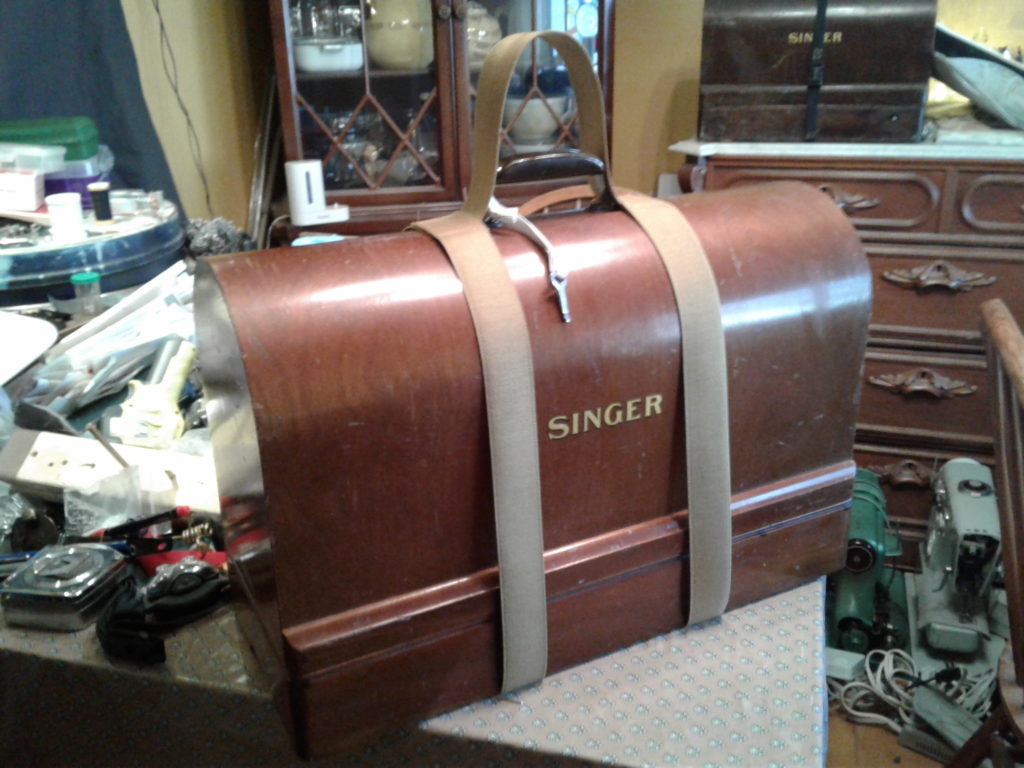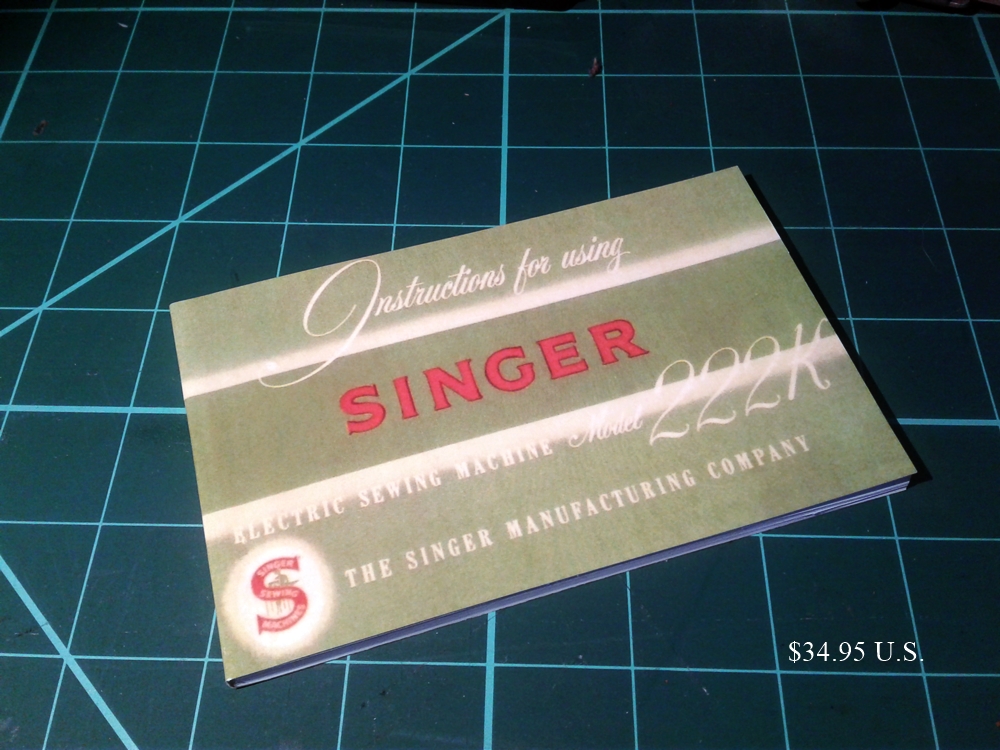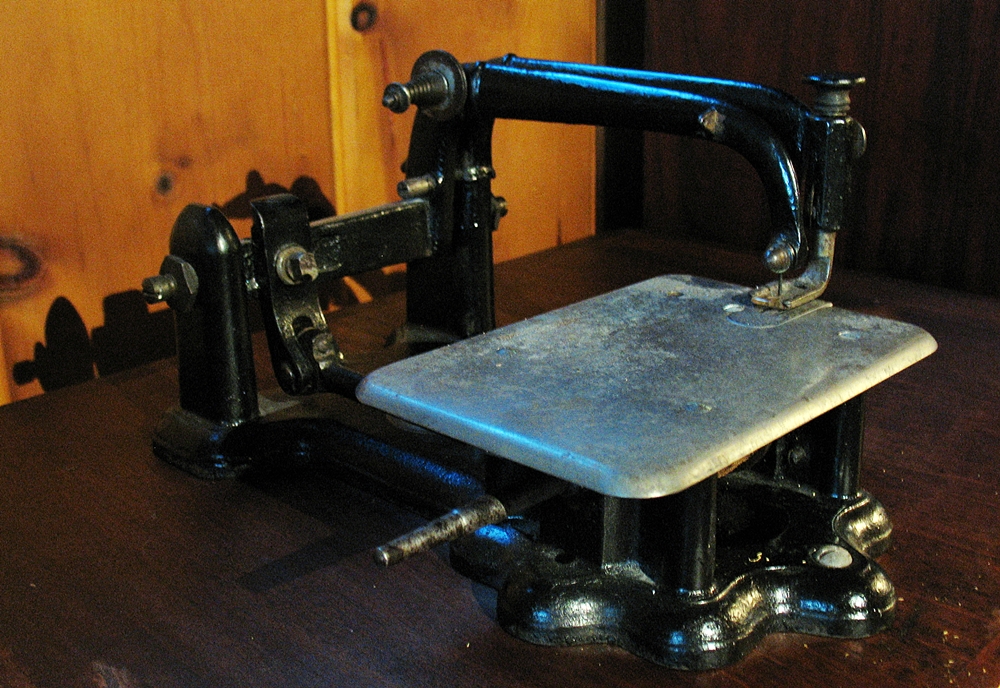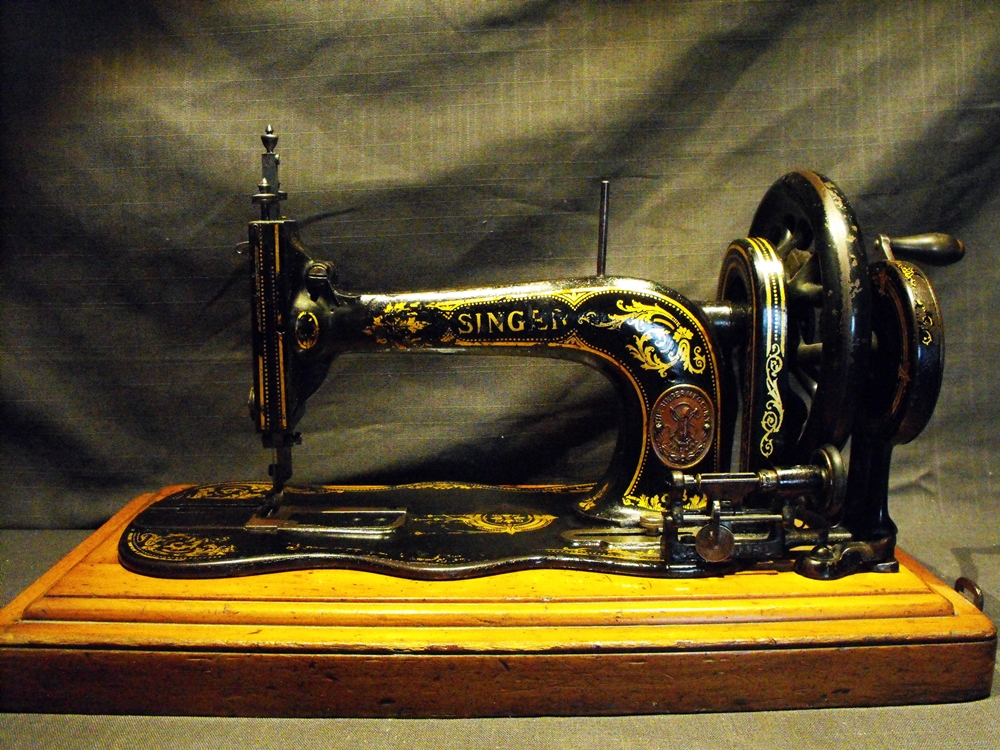
I have been getting the shop re-organized of late, with the PCS (post concussion syndrome) I suffer from some terrible short term memory issues, and organizing things helps me map out where things are.
Anyways…
Marie Louise is my 1911 Singer 31-20 tailor’s machine, named after the French lady who owned her and used her as she spent a lifetime working as a seamstress for a major tailoring company here. Now she resides in my shop and is one of my all time favourite machines to use as she never fails in any task i set her to.
She was born in an age when the automobile was still a new thing, when a great number of people did not have electricity, phones, or modern appliances.
Now she is surrounded by modern technology like my tablet and wireless printer, and lit by an led instead of a kerosene lamp… I figure she will outlast all this modern technology too.


















